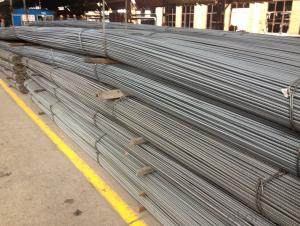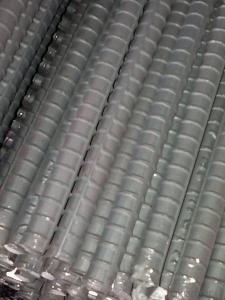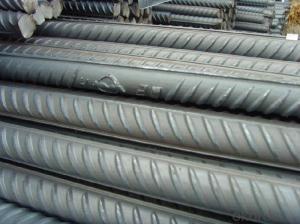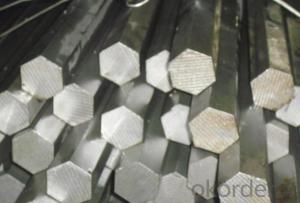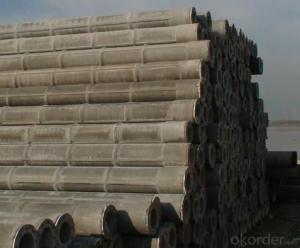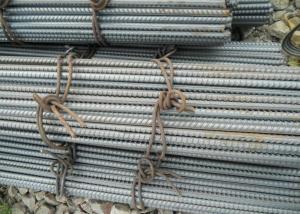Different Material Hot Rolled Dedormed Steel Rebar
- Loading Port:
- China main port
- Payment Terms:
- TT or LC
- Min Order Qty:
- 50 m.t.
- Supply Capability:
- 200000 m.t./month
OKorder Service Pledge
OKorder Financial Service
You Might Also Like
Specifications of Different Material Hot Rolled Dedormed Steel Rebar
Standard | GB | HRB500 | |
Diameter | 6mm,8mm,10mm,12mm,14mm,16mm,18mm,20mm, 22mm,25mm,28mm,32mm,36mm,40mm,50mm | ||
Length | 6M, 9M,12M or as required | ||
Payment term | TT or L/C | ||
Application | mainly used in construction industry to reinforce concrete structures and so on | ||
Quality | First quality, the goods are from Chinese big manufacturers. | ||
Type | Hot rolled deformed steel bar | ||
Brand name | DRAGON | ||
Chemical Composition of Different Material Hot Rolled Dedormed Steel Rebar
(Please kindly find our chemistry of our material based on HRB500 as below for your information)
Grade | Technical data of the original chemical composition (%) | ||||||
C | Mn | Si | S | P | V | ||
HRB500 | ≤0.25 | ≤1.60 | ≤0.80 | ≤0.045 | ≤0.045 | 0.08-0.12 | |
Physical capability | |||||||
Yield Strength (N/cm²) | Tensile Strength (N/cm²) | Elongation (%) | |||||
≥500 | ≥630 | ≥12 | |||||
Theoretical weight and section area of each diameter as below for your information:
Diameter(mm) | Section area (mm²) | Mass(kg/m) | Weight of 12m bar(kg) |
6 | 28.27 | 0.222 | 2.664 |
8 | 50.27 | 0.395 | 4.74 |
10 | 78.54 | 0.617 | 7.404 |
12 | 113.1 | 0.888 | 10.656 |
14 | 153.9 | 1.21 | 14.52 |
16 | 201.1 | 1.58 | 18.96 |
18 | 254.5 | 2.00 | 24 |
20 | 314.2 | 2.47 | 29.64 |
22 | 380.1 | 2.98 | 35.76 |
25 | 490.9 | 3.85 | 46.2 |
28 | 615.8 | 4.83 | 57.96 |
32 | 804.2 | 6.31 | 75.72 |
36 | 1018 | 7.99 | 98.88 |
40 | 1257 | 9.87 | 118.44 |
50 | 1964 | 15.42 | 185.04 |
Usage and Applications of Different Material Hot Rolled Dedormed Steel Rebar
Deformed bar is widely used in buildings, bridges, roads and other engineering construction. Big to highways, railways, bridges, culverts, tunnels, public facilities such as flood control, dam, small to housing construction, beam, column, wall and the foundation of the plate, deformed bar is an integral structure material. With the development of world economy and the vigorous development of infrastructure construction, real estate, the demand for deformed bar will be larger and larger..
Packaging & Delivery of Different Material Hot Rolled Dedormed Steel Rebar
Packaging Detail: products are packed in bundle and then shipped by container or bulk vessel, deformed bar is usually naked strapping delivery, when storing, please pay attention to moisture proof. The performance of rust will produce adverse effect.
Each bundle weight: 2-3MT, or as required
Delivery Detail: within 45 days after received advanced payment or LC.
Label: to be specified by customer, generally, each bundle has 1-2 labels
Trade terms: FOB, CFR, CIF
Picture of Different Material Hot Rolled Dedormed Steel Rebar
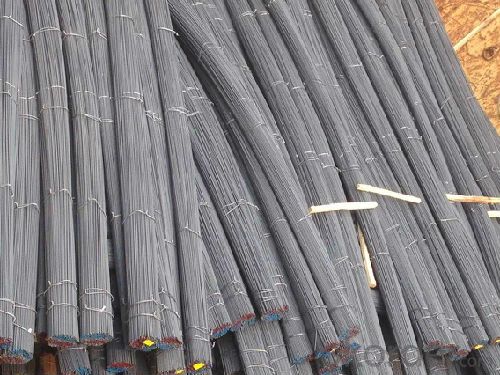


Note:
1. Our products are produced according to national standard (GB), if not, supply according to national standards (GB) or agreement as customer required.
2. Other Grade and Standard Deformed Steel Bar we can supply:
Grade: GR40/GR60, G460B/B500A/B500B/B500C,BST500S
Standard: ASTM, BS, DIN
The Minimum Order Quantity of these products is high, and need to be confirmed.
3. We can not only supply Deformed Steel Bar; if you need anything about building materials, please contact us for further information.
4. Please send us your detail specifications when inquire. We will reply to you as soon as possible. We sincerely hope we can establish a long stable business relationship.
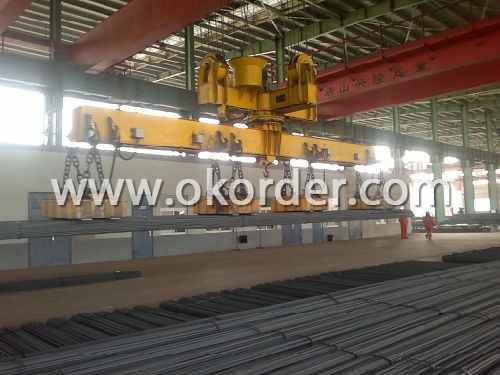
Deformed Steel Bar in testing
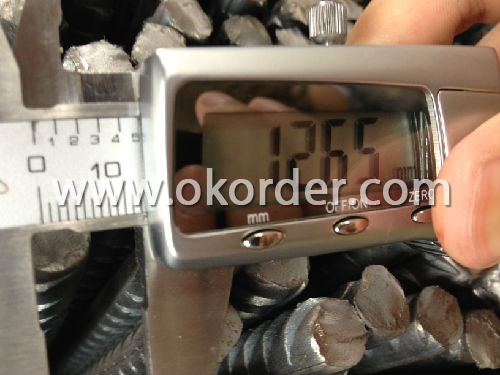
- Q: Why is the difference between left and right threads? What's the difference?
- Generally, the right-hand thread is in accordance with people's habits, just as the pointer of a clock is right. Compared with the less threaded but is indispensable, it has certain effect, more commonly used threaded on the rotating shaft with a more general rotation shaft are turning to the right, as some pump, motor, fan in the shaft as a tightening wheel for all kinds of leaves threaded, when the impeller rotation relative to the tightening nut, it has a different rotation inertia force, if it is the right-hand thread words will lead to a tightening mother increasingly loose causing impeller loose damaged equipment. This force in the switch machine or a great change in speed when the performance is particularly prominent, so the choice of left-handed thread more and more tight.
- Q: What is the lifespan of steel rebars in different environments?
- The lifespan of steel rebars can vary depending on the environment they are exposed to. In general, steel rebars have a long lifespan and can last for many decades in most environments. However, in harsh or corrosive environments such as coastal areas with high salt content or industrial areas with chemical exposure, the lifespan may be reduced. Proper maintenance and protective measures, such as coatings or cathodic protection, can significantly increase the lifespan of steel rebars in these environments.
- Q: What are the common challenges in handling steel rebars during construction?
- Some common challenges in handling steel rebars during construction include their heavy weight, which can make them difficult to lift and maneuver, the need for proper storage to prevent rusting and damage, the risk of injury if not handled correctly, and the need for precision in cutting and bending them to fit specific structures.
- Q: Are there any codes or regulations for the use of steel rebars in construction?
- Yes, there are codes and regulations in place for the use of steel rebars in construction. In many countries, including the United States, the American Concrete Institute (ACI) provides guidelines and standards for the design and construction of reinforced concrete structures. The ACI 318 Building Code Requirements for Structural Concrete includes provisions for the use of steel rebars, detailing their requirements for size, placement, and quality. Similarly, the International Building Code (IBC) is widely adopted and provides regulations for construction practices in various jurisdictions. It includes provisions and references to standards that govern the use of steel rebars in reinforced concrete structures. Additionally, there are other standards organizations, such as the British Standards Institution (BSI) in the United Kingdom, which have their own codes and regulations for the use of steel rebars in construction. These codes and regulations are essential to ensure the safety and durability of structures. They specify requirements for the size, grade, and placement of rebars, as well as guidelines for the design, detailing, and construction of reinforced concrete elements. Compliance with these codes and regulations helps to ensure that structures are built to withstand the expected loads and perform as intended.
- Q: Can steel rebars be used in architectural concrete elements?
- Yes, steel rebars can be used in architectural concrete elements. They provide additional strength and reinforcement to the concrete structure, ensuring its durability and stability. Steel rebars are commonly used in architectural designs such as columns, beams, and slabs to enhance the overall structural integrity of the concrete elements.
- Q: How are steel rebars classified based on their yield strength?
- Steel rebars are classified based on their yield strength by assigning them grades or designations, such as Grade 40, Grade 60, or Grade 75. These grades indicate the minimum yield strength in thousands of pounds per square inch (ksi) that the rebars are able to withstand before permanent deformation occurs.
- Q: How do steel rebars improve the strength of concrete?
- Steel rebars improve the strength of concrete by providing reinforcement and enhancing its structural integrity. The rebars act as a skeleton, distributing and transferring the load across the concrete structure. This prevents cracks and increases the overall tensile strength of the concrete, making it more resistant to bending, shearing, and other external forces.
- Q: Can steel rebars be used in swimming pools and water tanks?
- Yes, steel rebars can be used in swimming pools and water tanks. Steel rebars are commonly used as reinforcement in these structures to provide additional strength and stability. The rebars are typically placed within the concrete or masonry walls of the pool or tank during construction. Steel rebars are highly durable and resistant to corrosion, making them an ideal choice for these applications where they will be constantly exposed to water. Additionally, the use of steel rebars helps to prevent cracking and improve the overall structural integrity of the pool or tank.
- Q: What are the common factors that can cause premature failure of steel rebars?
- There are several common factors that can cause premature failure of steel rebars. These include corrosion, improper installation, inadequate concrete cover, poor quality control during manufacturing, exposure to extreme temperatures, high levels of stress or loading, and environmental factors such as chemicals or moisture.
- Q: What is the effect of exposure to UV radiation on steel rebars?
- Exposure to UV radiation can cause degradation and weakening of steel rebars. The radiation can break down the protective oxide layer on the surface of the steel, leading to corrosion and rust formation. This can compromise the structural integrity of the rebars and potentially lead to structural failures in concrete structures. Therefore, it is important to protect steel rebars from prolonged exposure to UV radiation to ensure their long-term durability and safety.
Send your message to us
Different Material Hot Rolled Dedormed Steel Rebar
- Loading Port:
- China main port
- Payment Terms:
- TT or LC
- Min Order Qty:
- 50 m.t.
- Supply Capability:
- 200000 m.t./month
OKorder Service Pledge
OKorder Financial Service
Similar products
Hot products
Hot Searches
Related keywords
